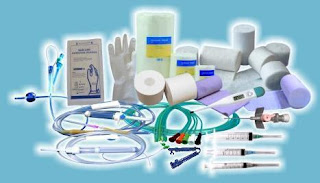U.S. Medical Disposables; Play an Important Role in the Healthcare Industry
Medical disposables, as the term suggests are made for one-time use only. Infection control is the primary reason for creating medical disposables. They cannot transmit infectious agents to later patients because they are intended for one-time use. The most important factor in the design of medical disposables is cost, but single-use products require a careful balance between cost, material, performance, reliability, and shelf life. Examples of U.S. medical disposables include disposable medical catheters, conventional syringes, isolation gowns, blood glucose test strips, procedure kits and trays, and wound care products.
Plastics are often used to make medical disposables as they
are relatively inexpensive. Polycarbonates are used to make a syringe because
of their strength and PVC because of its flexibility. Whereas, reusable devices
are made of sturdier, more costly materials such as steel or ceramics. Medical
disposables are sterilized before leaving the manufacturing facility. Moreover,
to reduce human interaction, high production volumes of medical disposables
call for an automated assembly in clean rooms.
Reprocessing of labeled
medical equipment for ‘single-use’ has been standard practice in the United
States hospitals for years, as they help cut costs and reduce medical waste.
According to the Food and Drug Administration’s (FDA’s) regulations,
reprocessors must comply with the same requirements that apply to original
equipment manufacturers before medical devices can be reprocessed and reused.
However, there are some companies that have developed techniques that allow
their disposables to be reused in various applications.
U.S. medical disposables are used in drug and fluid
delivery, surgery, wound management, patient examination, diagnostic testing, sterilization,
incontinence management, and to reduce the discomfort of patient. With the
increasing incidence of hospital acquired infections and diseases, the demand
for medical disposables is also increasing at a rapid pace. For instance, in
Germany, around 400,000 to 600,000 patients suffer a hospital acquired
infection each year; 10,000 to 15,000 of them die, according to the Robert Koch
Institute, a German federal government agency and research institute
responsible for disease control and prevention.




Comments
Post a Comment